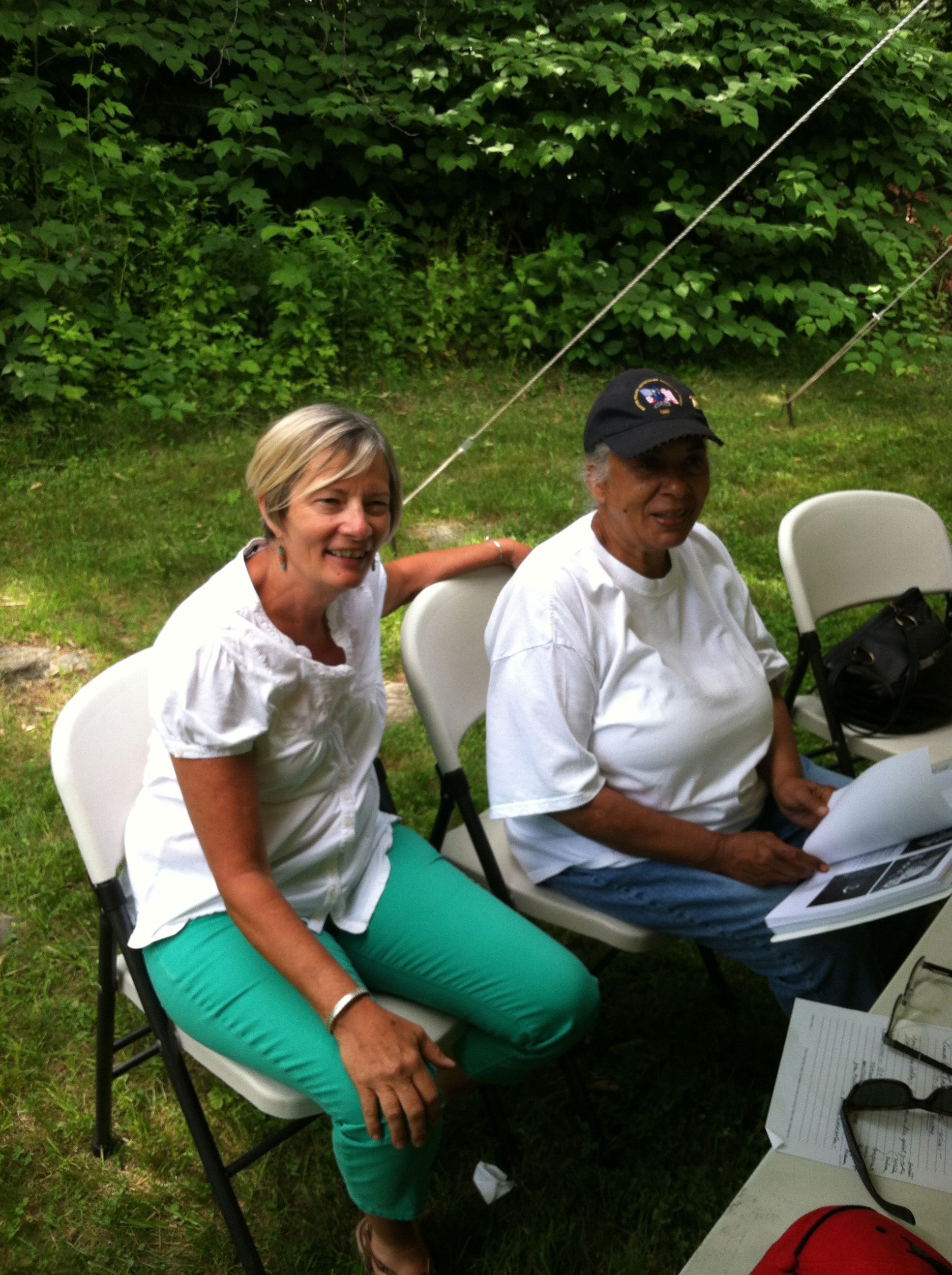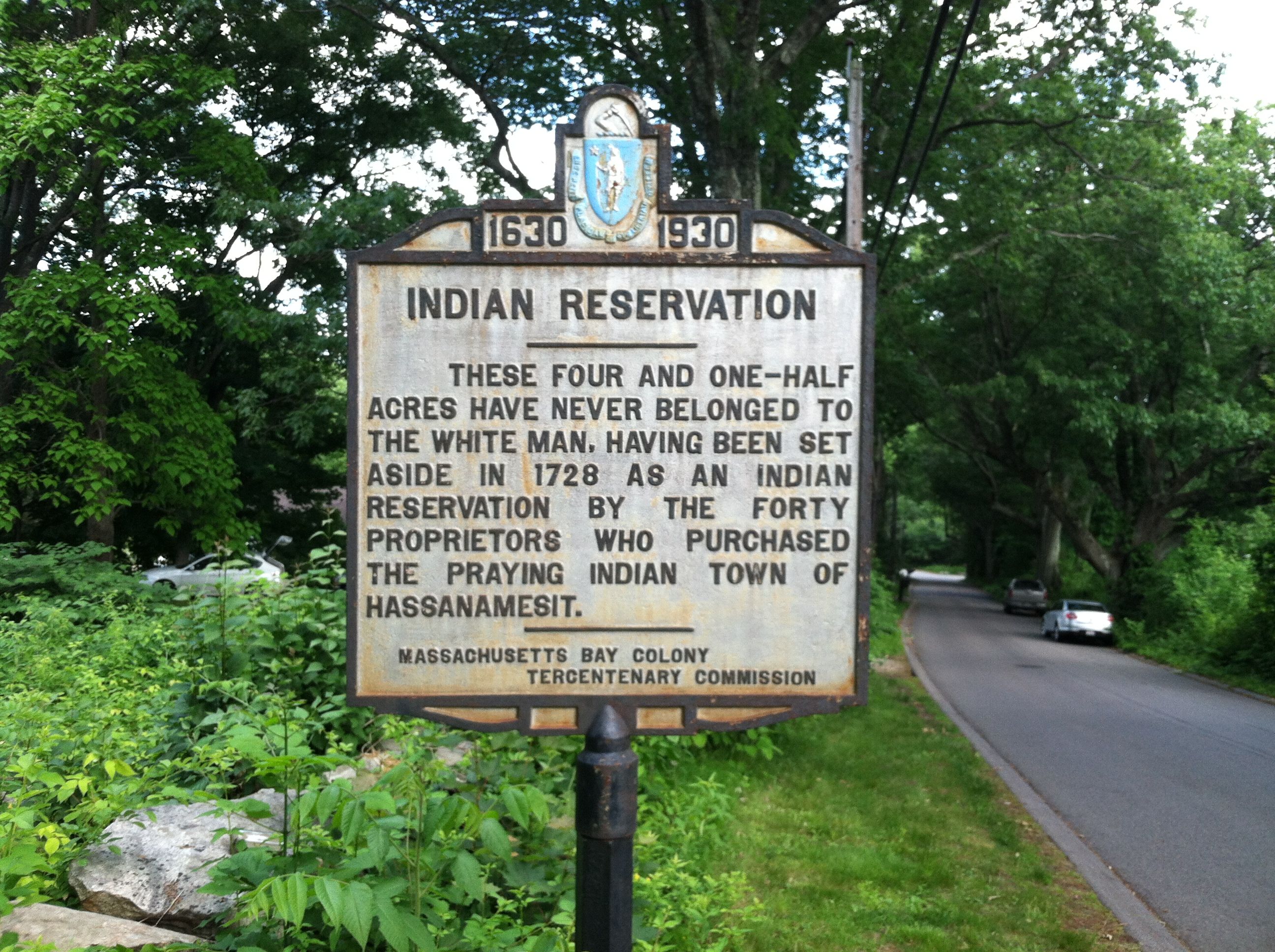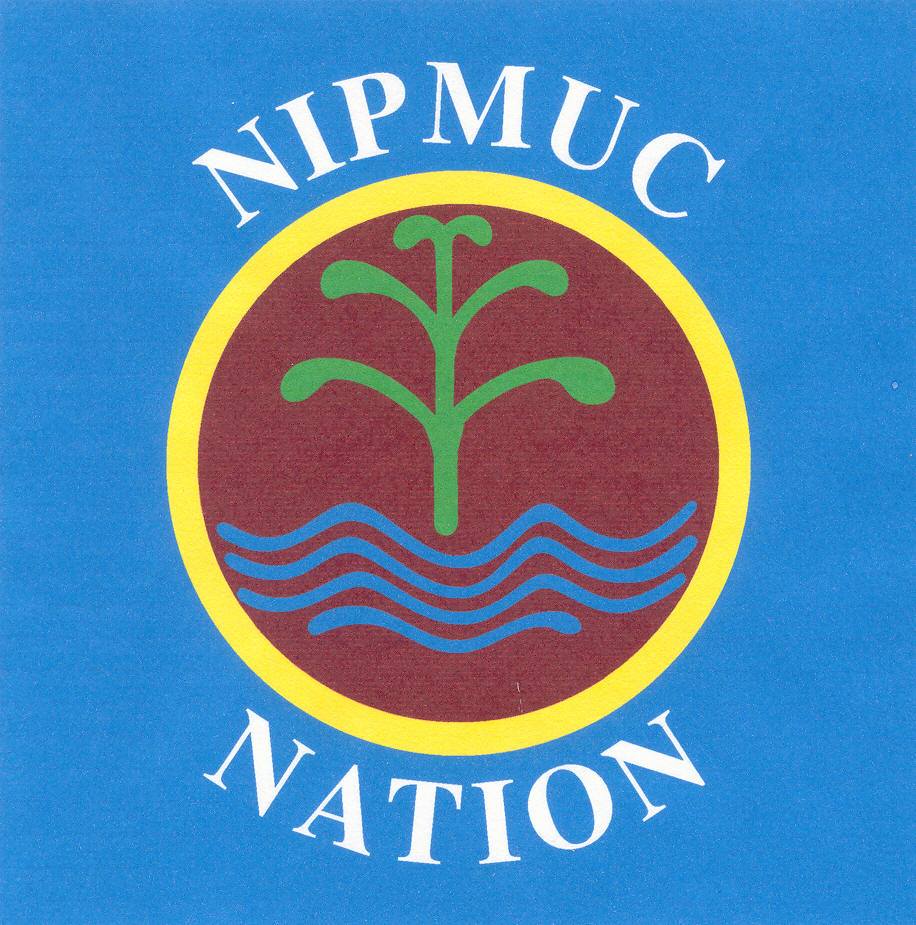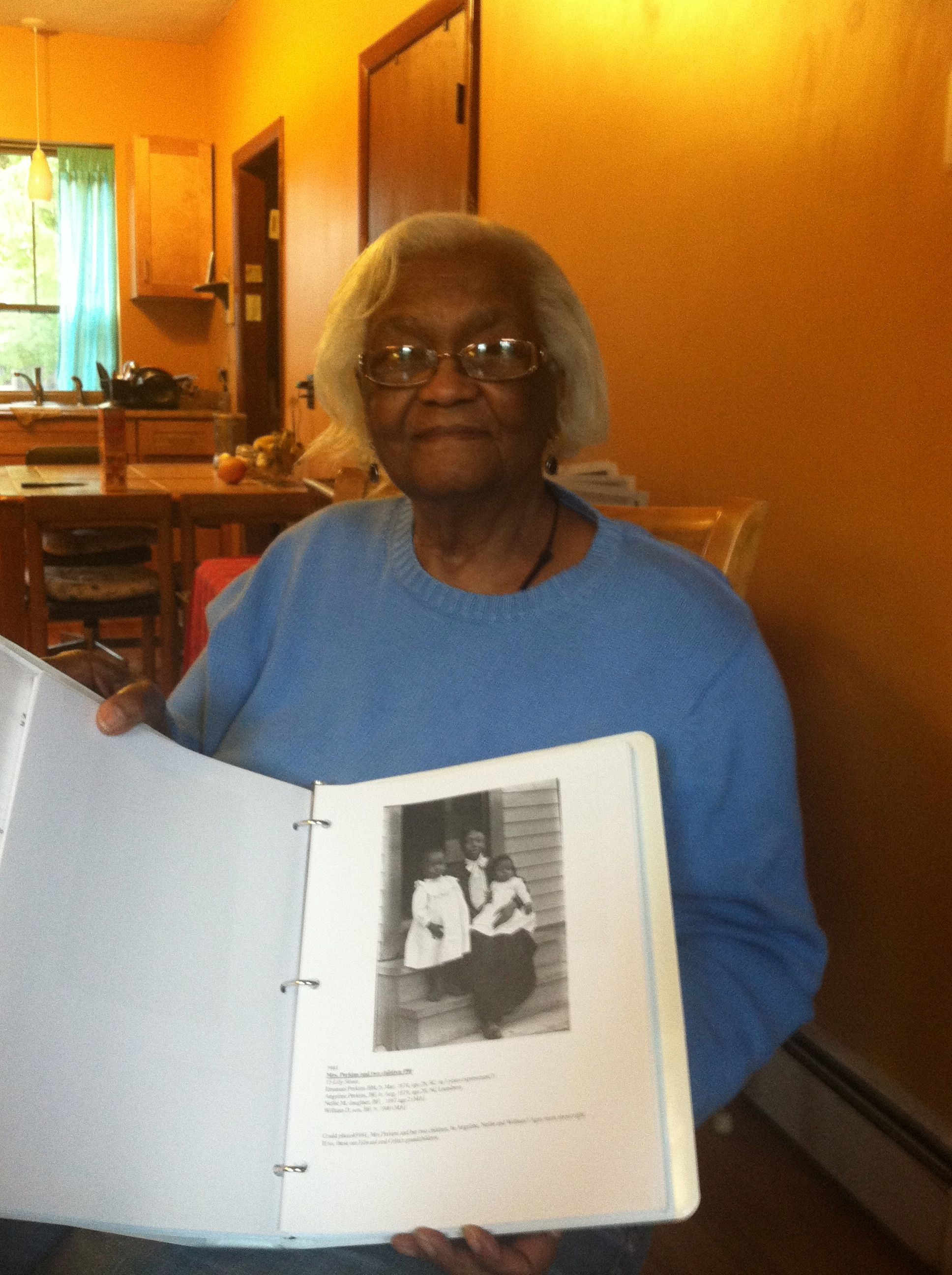Learning in April about the Nipmuc heritage of so many people in the photos prompted Ranger Chuck Arning to contact Cheryl Toney Holley, Sachem of the Hassanamesit Nipmucs and to tell her about our project. Cheryl generously invited Chuck, Frank, and Janette to attend the Strawberry Moon Festival with the photos. Before the event she posted the names of the people in the photos to inform descendants about the collection which has already yielded great results! An accomplished genealogist, Cheryl also sent us information about a number of her ancestors who appear in the photos, including Kenneth Anderson, her great-great grandfather, and the Bates and

Morris families.
On a sparkling cool June day, we participated in a moving ceremony focusing on the symbolic heart-shape of the strawberry, forgiveness, and prayers sent aloft from tobacco sprinkled on a blazing wood fire. We then spent a lovely afternoon sharing and listening. Among our many conversations: Nellie Toney told us about her cousin, Eugene Shepard and the family’s Native American roots in Sturbridge. Susan Pegan Wilson-Price and her brother, Glenn Wilson, found photos of ancestors on both sides of their family—the Wards and the Wilson—and shared stories with us. And we had a “small world” moment when Mildred McCowan, a retired detective with the Boston Police Department, told us that she worked many years with Paul Cato, Lois Perkins Cato’s son, whose Perkins ancestors are well represented in the collection.
The stories we heard today about the African American-Nipmuc connection added another layer of complexity to our research. They really drove home to us that the photo collection represents, among other things, the creation of an enduring community that has often been rendered invisible.


